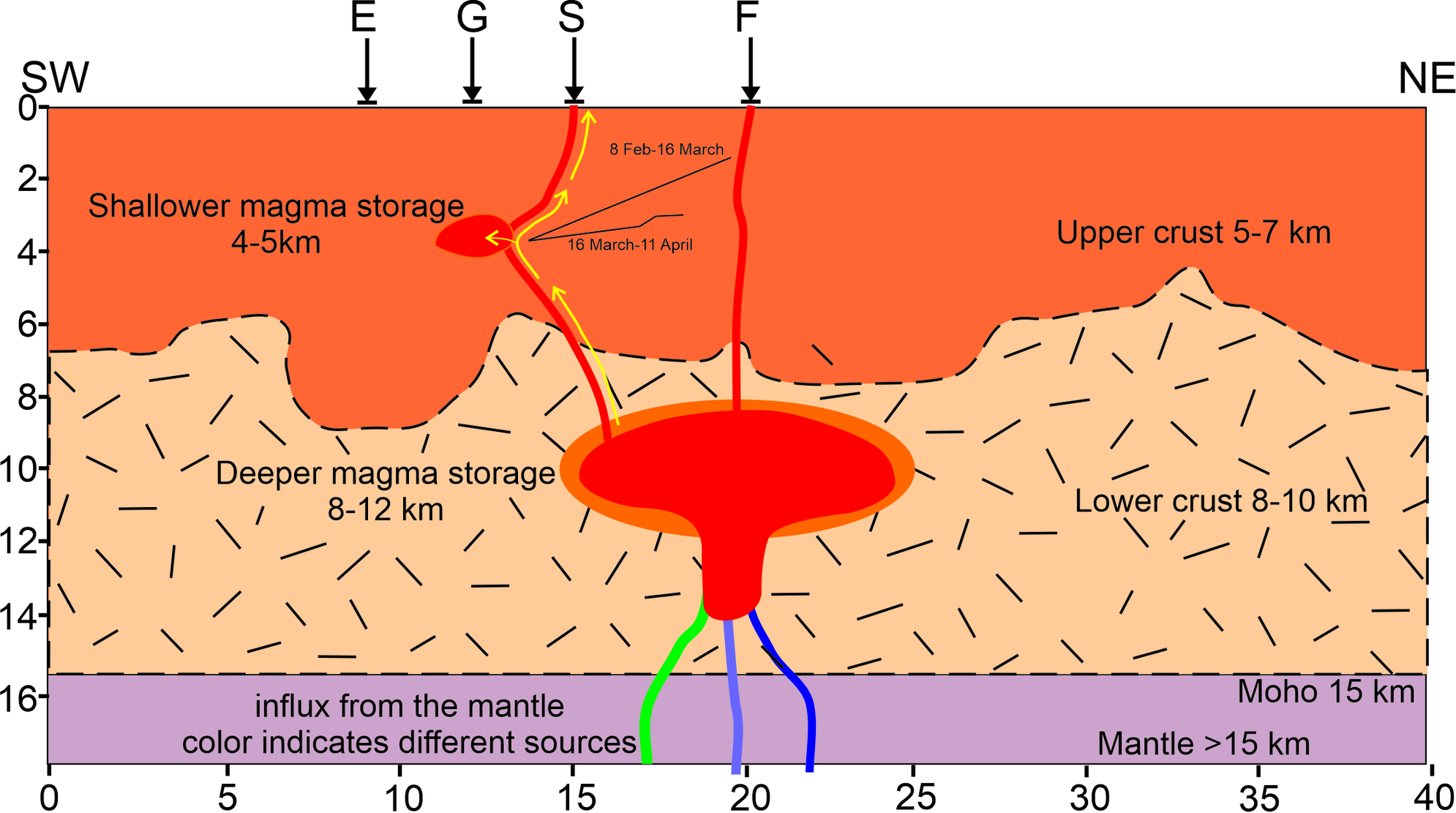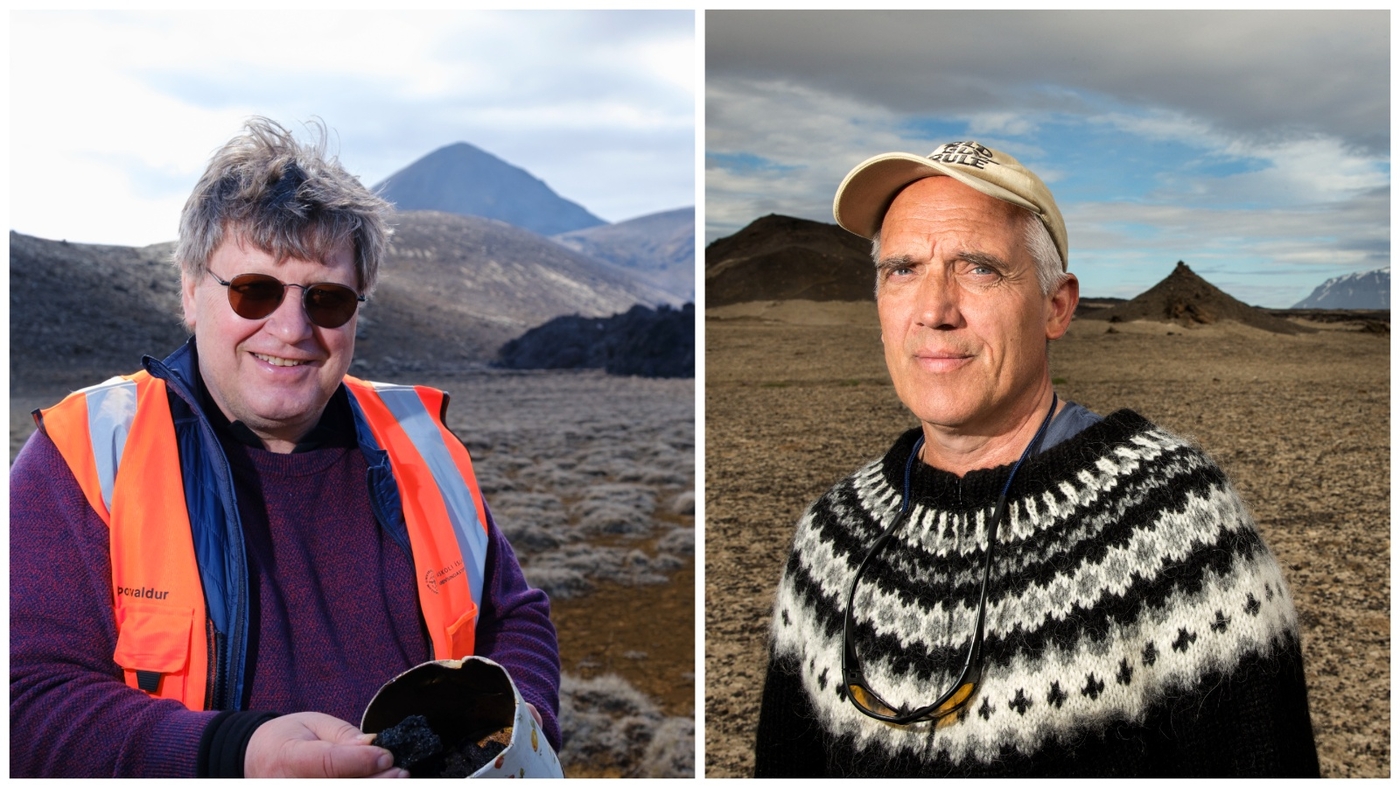"Comparing the current events in Reykjanes with the historical eruptions on the Reykjanes Peninsula strongly indicates that the Reykjanes Volcanic Belt (RVB) has awakened from an approximately 800-year-long sleep, and a new eruption period has begun. This could last for decades, if not centuries," says Þorvaldur Þórðarson, professor of volcanology and petrology at the University of Iceland, one of the authors of a new scientific article on the eruptions in Reykjanes.
The article was published recently in the scientific journal Terra Nova. Co-authors include Ármann Höskuldsson, research professor in volcanology, and William M. Moreland, postdoctoral researcher, both at the University of Iceland, along with an international team of scientists from Uppsala University (Sweden), the Academy of Sciences of the Czech Republic, and the universities of Oregon (Eugene) and California (San Diego).
This team has been researching the eruptions and seismic activity accompanying the ongoing disturbances on the Reykjanes Peninsula, beginning in 2019, particularly in the area covering Svartsengi, Fagradalsfjall, and Krýsuvík.
Þorvaldur notes that these disturbances have caused significant damage on the Reykjanes Peninsula, including the evacuation of Grindavík, where the inhabitants' future remains uncertain. "The research utilises measurements of seismic activity and the chemical composition of the erupted lava to analyse the geological processes and phenomena causing these events."
Eruption period likely to last the next 400 years or so
The scientists’ article states that eruptions in Iceland occur every three to five years on average, but the force, size, and duration of these events vary greatly. Basalt eruptions within central volcanoes are typically smaller and last a short time; from days to weeks. However, basalt eruptions along kilometre to tens-of-kilometre-long fissures and/or crater rows within fracture swarms can produce lava flows covering tens to hundreds of square kilometres, lasting months, years, or in some cases, decades.
"In the last four thousand years, the eruption belts of the RVB have produced eruptions in three well-defined eruption periods, each lasting about 400 years. Between these periods, there are about 800 years with no eruptions. The last eruption period ended with the eruptions at Eldvörp (e. fire launchers), Illahraun (e. Bad Lava), and Arnasetur (e. eagle´s nest) in 1240, about 800 years ago. These eruptions were part of the so-called Reykjanes Fires (Reykjaneseldar), a series of about 10 eruptions on the western Reykjanes Peninsula and in the sea off Reykjanes from 1210 to 1240. The disturbances and volcanic activity we have witnessed in the last five years likely mark the beginning of a new eruption period on the Reykjanes Peninsula; a period that will probably be with us for the next 400 years or so. This activity has and will continue to impact our daily lives and can cause significant disruptions and damage to vital infrastructure, such as power plants, airports, and urban areas," says Ármann Höskuldsson.
He says that the first three eruptions occurred in and around Fagradalsfjall, first in Geldingadalur, which started in March and ended in September 2021. The second eruption occurred in Meradalur in August 2022, and the third one nearly a year later at Litli-Hrútur in July to August 2023.
"Following significant disturbances north of and in Grindavík, which peaked on 10 November last year and led to the evacuation of the town, the volcanic activity moved to Sundhnúkar, with eruptions starting on 18 December, 14 January, 8 February, 16 March, and 29 May, following magma accumulation at depths of four to five kilometres below Svartsengi over periods of two to five weeks."
Diagram of the magma plumbing system

A diagram showing magma chambers and feeder paths for volcanic activity on the Reykjanes Peninsula from 2021-2024. Seismic tomography indicates that a large and deep magma chamber, containing up to 50 cubic kilometres of molten rock, sits at 9-12 kilometres depth directly beneath the area extending from Sundhnúkar (Su), under Fagradalsfjall (F), and to Krýsuvík (Kr). In the three Fagradalsfjall eruptions from 2021-23, the magma surfaced directly from this deep chamber, and it can be noted that the "gas-magma" intrusion in Krýsuvík in 2020 (orange line and dot to the right) also originated from this magma chamber. When the disturbances shifted to Svartsengi (Sv) and Sundhnúkar (Su), the magma rose from the deep chamber into a smaller magma chamber (total volume 0.02 km3) at about 4-5 kilometres depth beneath Svartsengi. When this chamber reached its limits, the magma rose, sometimes very rapidly, towards the surface, twice forming "blind" conduits and four times reaching the surface in eruptions. In the last eruption, which began on March 16, the progression changed slightly, as the eruption continued despite the onset of uplift around Svartsengi. It seems as if the flow from below split into two components (as indicated by the orange arrows), with one part going to the surface in the Sundhnúkar eruption and another part entering the shallow storage chamber beneath Svartsengi. Whether this disturbance and volcanic activity will extend to Eldvörp remains to be seen.
Eruptions in one location or several simultaneously?
Þorvaldur explains that one of the key questions that arose when activity shifted to the Sundhnúkar belt was whether there might be a subsurface connection between the magma that surfaced in the Fagradalsfjall eruptions and that which emerged in the Sundhnúkar belt.
"It is important to determine whether the magma that produced these eruptions comes from one large magma chamber in the crust beneath the entire Reykjanes Peninsula, or directly from the mantle. If the former scenario is the case, we could face simultaneous eruptions in more than one location on the Reykjanes Peninsula. In the latter scenario, the activity is more likely to be confined to specific areas, or eruption belts at any given time," says Þorvaldur.
William M. Moreland, postdoctoral researcher at the University of Iceland, and co-author, collects samples in the first volcanic eruption in 2021. ""The magma flow is likely from the same storage chamber, but it reaches the surface through different feeder paths," says Þorvaldur.

Ármann Höskuldsson refers to the article and also emphasises the importance of understanding whether eruptions in adjacent eruption belts, such as Fagradalsfjall and Sundhnúkar, are connected to separate magma chambers in the crust or if the magma that surfaces in such events comes from one and the same magma chamber.
"If the former scenario is the case, the activity on individual eruption belts is entirely independent of the activity on adjacent belts, and the belts can be viewed as separate systems. If the latter scenario is the case, individual magma or volcanic systems are more complex, and the extent of the systems is determined by the reach of the magma chamber supplying both belts with magma."
Similar magma in all eruptions
The team’s research revealed that the chemical composition of the magma that surfaced in the December eruption on the Sundhnúkar belt strongly resembles the magma that emerged during the Fagradalsfjall eruptions from 2021 to 2023. According to the scientists, this suggests a common origin: "The magma flow is likely from the same storage chamber, but it reaches the surface through different feeder paths," says Þorvaldur.
In addition to the geochemical data, the scientists relied on observations of earthquake locations and seismic tomography, which show, according to them, that the magma that has surfaced in the eruptions so far originates from a deep-seated magma chamber (see accompanying diagram) that is about ten kilometres wide and sits at depths of nine to twelve kilometres, with its centre under Fagradalsfjall.
"This chamber likely formed in the early decades of this century and contains up to 50 cubic kilometres of magma. For comparison, the volume of magma that surfaced in the three Fagradalsfjall eruptions is about 0.12 cubic kilometres, and the volume that surfaced in the four Sundhnúkar eruptions is of a similar magnitude. Taking into account the volume that remained in the magma conduits, the total volume of magma is doubled, i.e., 0.25 cubic kilometres for each of the eruptions and 0.5 cubic kilometres in total, which was in motion during these disturbances. This is only 1% of the total volume of magma in the deeper storage chamber. These results are consistent with the estimated average magma flow rate from the deep-seated chamber during these disturbances, which is on the order of a few cubic metres to a few tens of cubic metres per second," says Þorvaldur.
To further explain, they say that the magma leaks from this chamber through what they call a pin-prick hole. "It is expected that this activity will continue in the coming years, but whether it will remain at the Sundhnúkar belt, move back to Fagradalsfjall, or jump to Eldvörp remains to be seen," says Ármann.




